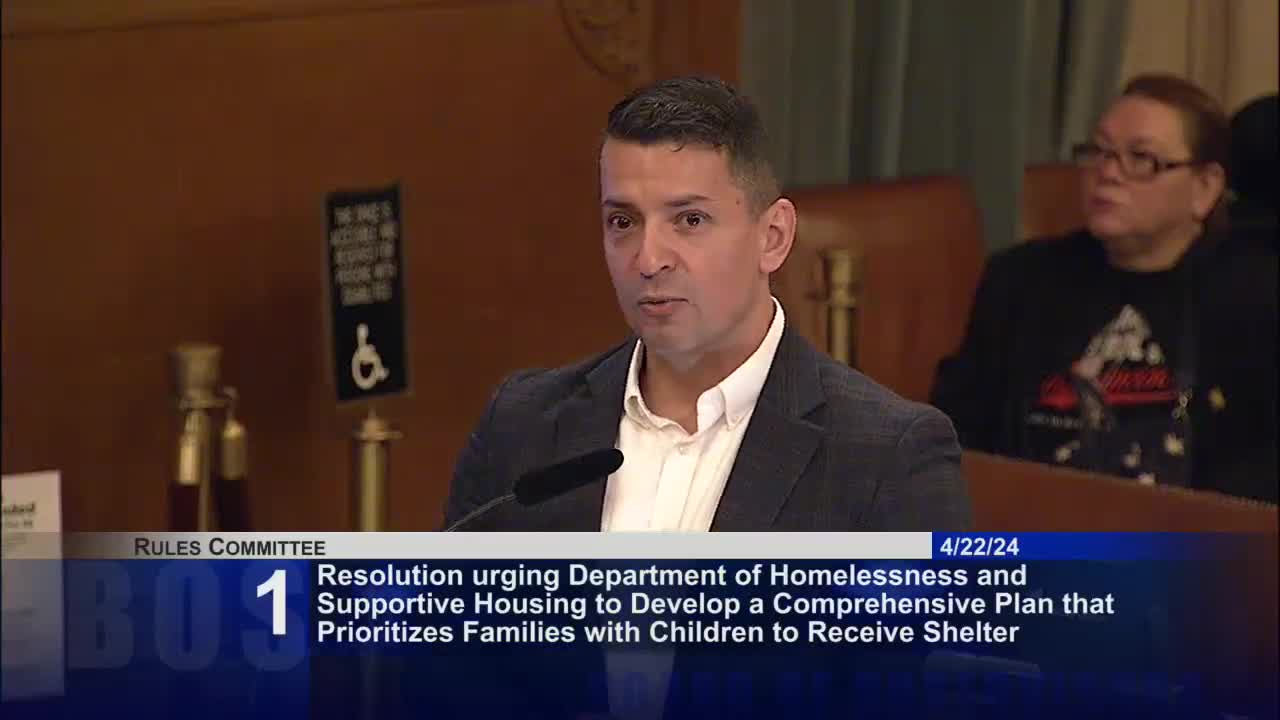San Francisco officials discuss support for newcomer families in sanctuary city meeting
April 22, 2024 | San Francisco County, California

This article was created by AI summarizing key points discussed. AI makes mistakes, so for full details and context, please refer to the video of the full meeting. Please report any errors so we can fix them. Report an error »

In a recent San Francisco County government meeting, officials discussed critical issues surrounding the city's status as a sanctuary city and the support systems in place for newcomers. The meeting highlighted the importance of reaffirming San Francisco's commitment to providing a safe haven for individuals fleeing global crises.
One of the key topics was the city's sanctuary city designation, which officials emphasized as vital for ensuring that all residents feel secure. This commitment is particularly significant in light of ongoing global tragedies that drive individuals to seek refuge. The discussion underscored the need for San Francisco to maintain its principles of safety and support for vulnerable populations.
Additionally, the meeting addressed the availability of federal resources for localities, with officials noting that while some funding opportunities exist, they have not yet been fully pursued. This raises questions about the city's readiness to leverage federal support to enhance local services.
The conversation also touched on the collaboration with the school district to provide shelter services, similar to those established at Buena Vista Horace Mann School. Currently, the University of San Francisco is set to offer temporary housing for up to 12 individuals over eight weeks, with plans to expand capacity.
A significant concern raised was the process by which newcomers are connected to essential services. Currently, there is no centralized entry point for these individuals; instead, they rely on various existing networks, such as schools and shelters, to access support. This decentralized approach may limit outreach efforts, as there is no direct initiative to connect with families who are not already engaged with city services.
Overall, the meeting highlighted the ongoing challenges San Francisco faces in supporting its diverse population, particularly newcomers. As discussions continue, the city must consider how to enhance its outreach and resource allocation to ensure that all residents receive the assistance they need. The next steps will likely involve exploring federal funding opportunities and improving coordination among city departments to better serve vulnerable communities.
One of the key topics was the city's sanctuary city designation, which officials emphasized as vital for ensuring that all residents feel secure. This commitment is particularly significant in light of ongoing global tragedies that drive individuals to seek refuge. The discussion underscored the need for San Francisco to maintain its principles of safety and support for vulnerable populations.
Additionally, the meeting addressed the availability of federal resources for localities, with officials noting that while some funding opportunities exist, they have not yet been fully pursued. This raises questions about the city's readiness to leverage federal support to enhance local services.
The conversation also touched on the collaboration with the school district to provide shelter services, similar to those established at Buena Vista Horace Mann School. Currently, the University of San Francisco is set to offer temporary housing for up to 12 individuals over eight weeks, with plans to expand capacity.
A significant concern raised was the process by which newcomers are connected to essential services. Currently, there is no centralized entry point for these individuals; instead, they rely on various existing networks, such as schools and shelters, to access support. This decentralized approach may limit outreach efforts, as there is no direct initiative to connect with families who are not already engaged with city services.
Overall, the meeting highlighted the ongoing challenges San Francisco faces in supporting its diverse population, particularly newcomers. As discussions continue, the city must consider how to enhance its outreach and resource allocation to ensure that all residents receive the assistance they need. The next steps will likely involve exploring federal funding opportunities and improving coordination among city departments to better serve vulnerable communities.
View full meeting
This article is based on a recent meeting—watch the full video and explore the complete transcript for deeper insights into the discussion.
View full meeting
